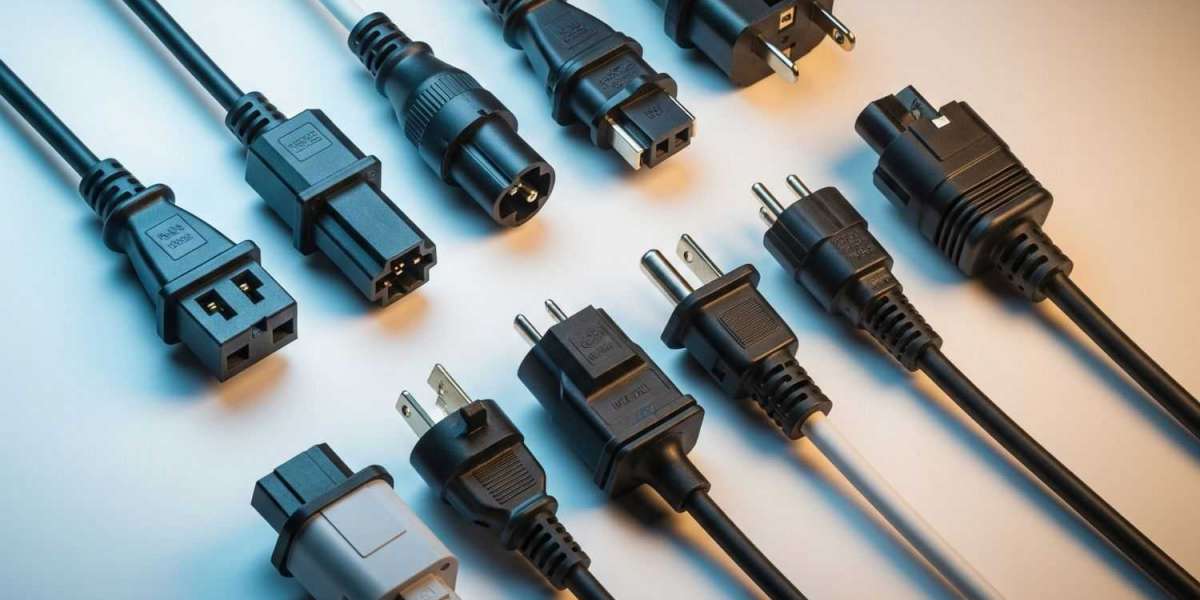You see power plugs every day, but have you ever wondered why they look different or why some fit in certain outlets and others don’t? That’s where NEMA plug types come in. NEMA Power Cords and plugs are designed to make sure your devices get the right amount of electricity safely, whether you’re at home, school, or work.
Understanding NEMA Plug Types
NEMA stands for National Electrical Manufacturers Association. This group sets the rules for how power plugs and outlets should look and work in the United States and some other countries. Their system makes sure that each plug and outlet matches perfectly, so you don’t plug a small device into a big, powerful outlet or the other way around.
Why Are NEMA Plug Types Important?
NEMA plug types keep you and your devices safe. Each type is made for a specific amount of electricity. For example, you don’t want to plug a lamp into a socket meant for a heavy machine. Using the right NEMA Power Cord and power plug means your electronics work well and you avoid accidents like shocks or fires.
How to Read a NEMA Plug Code
NEMA plug types use numbers and sometimes letters to show what they do. Here’s how to understand them:
The first number tells you the plug’s style and what kind of circuit it’s for.
If there’s an “L” at the start, it’s a twist-lock plug, which means it locks in place and won’t fall out easily.
The next number shows how much current (amps) the plug can handle.
A “P” at the end means it’s a plug, while an “R” means it’s a receptacle (the socket in the wall).
For example, a NEMA 5-15P is a common household plug: “5” is the type, “15” means 15 amps, and “P” means it’s a plug.
Common Types of NEMA Plugs
Let’s look at some of the most popular NEMA plug types you might see at home or school:
NEMA 1-15: This is a simple two-prong plug, often used for lamps and small gadgets. It doesn’t have a ground pin.
NEMA 5-15: This is the most common plug in homes today. It has two flat blades and one round ground pin. You see it on computers, TVs, and kitchen appliances.
NEMA 6-15 and 6-20: These are for bigger machines that need more power, like air conditioners or ovens. They have a special shape so you can’t plug them into the wrong outlet.
NEMA L5 and L6: The “L” means these are locking plugs. You twist them to lock them in place, so they don’t come loose. These are used for heavy tools or in places where safety is very important.
What Makes NEMA Plug Types Different?
Each NEMA plug type is made for a certain job. Some are for low power, like charging your phone, while others are for high power, like running a big washing machine. The shape and size of the plug make sure you only use it with the right outlet. This helps prevent accidents and keeps your devices working safely.
Where Do You Find NEMA Power Cords and Plugs?
You can find NEMA Power Cords and plugs in many places:
At home: For lamps, TVs, computers, and kitchen tools.
At school or work: For printers, projectors, and other electronics.
In factories: For big machines that need lots of power.
On camping trips: For plugging in your camper or trailer at a campsite.
How Do NEMA Plug Types Make Life Easier?
NEMA plug types make it easy to know which plug goes where. You don’t have to guess or worry about plugging something in the wrong way. Each NEMA Power Cord and power plug is made to fit only the right outlet, so your devices get the power they need without any risk.
Exact Answer: What Is a NEMA Plug Type?
A NEMA plug type is a special design for power plugs and outlets that follows rules set by the National Electrical Manufacturers Association. Each type is made for a certain amount of electricity and a specific job. Using the right NEMA Power Cord and power plug keeps your home and devices safe and helps everything work the way it should.
Fun Facts About NEMA Plugs
The most common plug in the United States is the NEMA 5-15, found in almost every home.
Locking NEMA plugs are used in places where it’s important that the cord doesn’t fall out, like hospitals or construction sites.
Each NEMA plug type has a unique shape, so you can’t mix them up by accident.
Tips for Choosing the Right NEMA Power Cord
Always check the shape of the plug and the outlet before buying a new cord.
Make sure the cord can handle the amount of power your device needs.
If you need to use a device outdoors or in a workshop, look for locking or heavy-duty NEMA Power Cords.
Never force a plug into an outlet if it doesn’t fit easily.
Safety Tips for Power Plugs
Don’t use a damaged power cord or plug.
Always unplug devices by holding the plug, not pulling the cord.
Keep cords away from water and hot surfaces.
Don’t overload outlets with too many devices.
When to Ask for Help
If you’re not sure which NEMA Power Cord or plug type to use, ask an adult or an electrician. Using the wrong plug can be dangerous, so it’s always better to be safe.
Conclusion
NEMA plug types are a big part of everyday life. They help you safely connect your devices to electricity, whether you’re at home, at school, or at work. By understanding what a NEMA plug type is and how NEMA Power Cords work, you can make smart choices, keep your home safe, and enjoy all your favorite gadgets without worry. Next time you plug something in, you’ll know exactly why that plug fits just right!








